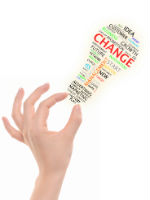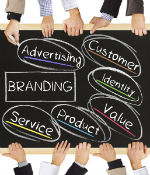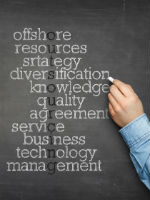I am proof that the work of the CCO is just one more ‘work stream’ added to the report going out. For example, I advocate a set of deliberate activities that evolve and mature leaders’ commitments and actions to embed critical new competencies and enable business transformation, but often I jump into this work with a plate full of projects. The work becomes too quickly attached to project plan movement rather than customer life improvement.
The CCO role hits a wall when the C-Suite isn’t united in understanding their roles and ongoing personal commitments in working with the CCO as a united team. Customer experience transformation and the work of this role also falter when too much work is layered on too soon and if the work isn’t broken into achievable segments. And often these roles are established without leaders agreeing to the tactics and energy necessary to achieve a customer-driven transformation.
To ensure greater success in their role, I encourage CCOs to move their work through the deliberate phases of my Customer Leadership Maturity Map. This work will be successful when CCOs take a stair-stepped approach to gaining leadership clarity and commitment to the framework and actions. As they embed new company competencies, over time, what the company stands for and its marketplace position will shift along with customer-driven growth. Starting with the lives of customers and employees will drive decision-making and elevate the brand in the marketplace.
Below is a summary of the milestones that define most clients’ transformation efforts in embedding the five competencies. For each phase of the maturity map, I’ve identified actions and behavior changes along the continuum of years one through five as the competencies are being embedded. After year five, it’s a matter of sharpening and improving these competencies for your organization. By their very nature, the five competencies are not a program, but rather a repeated cycle of one-company awareness, understanding, focus, and united action. We are finding that it takes about three years to have these become very comfortable inside the organization and up to five years until they are really embedded into the DNA of the business.
Commit: Gain leadership, clarity, and commitment to the five-competency framework or strategy. This work hinges on c-l-a-r-i-t-y. Executives need to understand with specifics the work that is ahead, both in terms of company action and their actions, decision-making, and behavior.
Unite and Build::Unite leaders and their organizations in competency-building and first round or experience reliability improvement actions. In this phase two outcomes are important: Initiating the build of your five-competency engine, and taking actions that focus on and improve priority experiences. Think of this as your beta version of this work. First, initiating your five-competency engine means to begin the process of building your first ‘clunky’ version of each competency. Don’t get caught up in the trap that they must be perfect to get started.
Embed: At this stage, the competencies are now part of how you do work inside your company. By this stage your leadership team should be united in driving accountability by customer journey stage, rather than silo-by-silo. Because they have now been an active part of the first generation of the five competencies, there should be an appreciation of resources necessary to sustain the cycle they establish as part of the operation. Employee teams should have been trained throughout the company on the “Customer Experience Development- CXD” process for improvement. The five competencies should now be embedded as part of building products, establishing services and conducting annual planning.
Mature: You are now actively engaged inexperience innovation and differentiation. By this phase, you should have tackled the majority of the irregular and unreliable customer experiences plaguing the customer journey along key touchpoints. This opens up resources for identifying and improving touchpoints for experience differentiation and innovation. Use the embedded competencies at this point to commit to differentiating moments in the customer journey. Employees should be able to work top down and bottoms up, practicing the five competencies, to build these experiences.
Elevate: Company differentiation. Your company and people are differentiated in the marketplace by how you conduct yourself in business. By now, the five leadership competencies have been embedded into your business engine and are part of the way people work, are compensated, and rewarded. Annual planning begins with an understanding of the growth or loss of your customer asset and the inflection points along your journey where opportunity exists. Experience reliability is managed, and leaders care about the process metrics which impact customer asset growth with as much rigor as they care about outcome metrics such as sales goals. You hire and enable employees guided by your customer journey framework.











